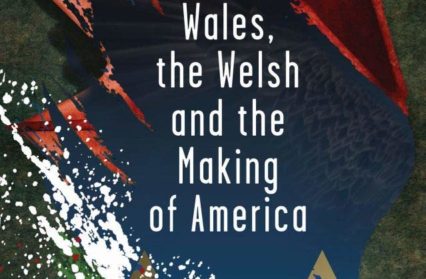In her new book, Vivienne Sanders charts the influence of Wales and the Welsh on the history and culture of the United States. Spanning the American revolutionary war to the industrialisation that paved its way to becoming a global superpower, Sanders tells the lesser-known stories of how Welsh immigrants helped shape modern-day America.
Wales Arts Review is pleased to present an extract from the introduction of Wales, the Welsh and the Making of America, which is published by University of Wales Press.
I can still remember my surprise during a tour of Shirley plantation in Virginia in 1970, when our guide said someone in colonial America hailed ‘from a place in England called Wales’. Although the early 1970s saw an outburst of white ethnic assertiveness and pride amongst groups such as Italian-Americans and Polish-Americans, Californian congressman Thomas M. Rees told the US House of Representatives in 1971 that ‘very little has been written of what the Welsh have contributed in all walks of life in the shaping of American history’. That statement remains true half a century later.
Why have Welsh and Welsh American contributions to American history been frequently underestimated or ignored? First, Wales is a small country, sparsely populated and long dominated by England and the English. Many Americans have been unaware of Wales or have thought it simply ‘a place in England’. Second, although a considerable proportion of colonial Americans were Welsh or of Welsh ancestry, they would soon be greatly outnumbered by immigrants from other nations. Dr Arturo Roberts, founder of a North American Welsh newspaper, pointed out: ‘There are 20 people of Irish descent for every one with Welsh descent – that makes a big difference.’ Third, the Welsh assimilated relatively easily. ‘They bought into the American dream,’ said Professor John Roper of the American Studies department at Swansea University. As George Washington supposedly said, ‘Good Welshmen make good Americans.’ Edward Hartmann, the son of a Welsh immigrant mother and writer of Americans from Wales (1967), argued that Welsh immigrants and their descendants were ‘not chauvinistic over past wrongs or vengeance-minded over former ill-treatment, they came over quietly, modestly, willing to accept what opportunities the new environment might have to offer’. A possible fourth reason might be the lack of any long-lasting and frequently replenished concentration of Welsh Americans in big cities – there has been no Welsh equivalent of the ‘Boston Irish’. Much Welsh emigration took place before the United State became increasingly industrialised and urbanised during the nineteenth century, and those early immigrants tended to settle in small townships in rural areas.
There have been a few studies of the Welsh and America, notably the respected Welsh historian David Williams’s pamphlet Wales and America (1945). Edward G. Hartmann’s Americans from Wales was reprinted in 1978 and 1983, and then by the National Welsh-American Foundation (NWAF) in 2001. There have also been more specialised studies of the Welsh in areas such as the Pennsylvania coalfields, Iowa, Tennessee and Wisconsin. Overall, though, as Arturo Roberts noted, ‘The Welsh have low visibility.’ Ronald L. Lewis, author of Welsh Americans: A History of Assimilation in the Coalfields (2008), used a similar vocabulary when he described the Welsh as ‘nearly invisible to most Americans’. Perhaps it is time to try to make the invisible visible, especially if doing so helps illuminate the nature and development of the United States of America.
Wales, the Welsh and the Making of America is available via University of Wales Press.












